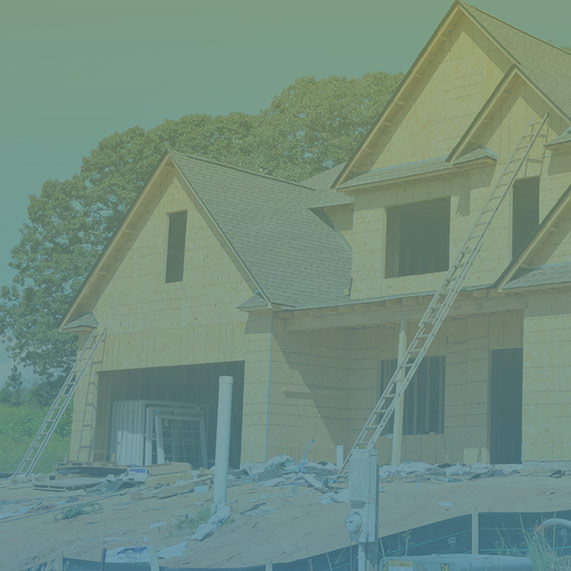How UAD 3.6 Will Change the Way Lenders Manage Appraisals
For the first time in over a decade, Fannie Mae and Freddie Mac are overhauling the Uniform Appraisal Dataset (UAD), and the ripple effects will reach every corner of the lending process.
By November 2026, all appraisals sold to the GSEs will need to follow the new UAD 3.6 standard. That means new report formats, expanded property data fields, and updated submission requirements through the UCDP.
If that sounds far off, it’s not. These updates will change how lenders order, review, and deliver appraisals, and waiting until the deadline to adjust could create real operational headaches.
This isn’t just a form redesign. It’s a modernization effort that will reshape the entire appraisal workflow from start to finish.
What Is the Uniform Appraisal Dataset (UAD)?
The Uniform Appraisal Dataset (UAD) is the standardized framework that governs how appraisal data is collected and transmitted to Fannie Mae and Freddie Mac. It ensures appraisals follow consistent data conventions, allowing the GSEs to validate, compare, and analyze property information across the industry.
The current UAD format, introduced in 2011, has served its purpose but no longer reflects how modern appraisals are performed or how data moves through today’s loan origination systems.
The upcoming UAD 3.6 update represents a full modernization, aligning appraisal data with new MISMO 3.6 standards, expanding property-level detail, and improving how information is shared between appraisers, lenders, and the GSEs.
For lenders, this shift isn’t just about form changes. It’s about moving toward a more data-centric, technology-enabled appraisal process that supports faster reviews, clearer risk assessment, and better integration across systems.
What Changes Are Coming with UAD 3.6?
The UAD 3.6 changes represent one of the most comprehensive updates to appraisal reporting in over a decade. Every part of the process—from how data is collected to how reports are delivered—will look and function differently.
Here’s a breakdown of the biggest shifts lenders need to prepare for:
| Area | What’s Changing | Why It Matters |
|---|---|---|
| Report Structure | The old appraisal forms (1004, 1073, etc.) are being replaced with a single, dynamic digital report. | Simplifies form management and ensures consistency across property types. |
| Data Fields | Expanded property data inputs, including detailed condition, quality, and energy efficiency metrics. | Improves accuracy and supports more transparent, data-driven valuations. |
| MISMO Alignment | The new format is built on the MISMO 3.6 data standard, aligning appraisals with broader mortgage industry data practices. | Enables smoother integrations with LOS, QC, and investor systems. |
| Submission Process | Updates to the SSR and UCDP systems will support the new data structure. | Ensures appraisals meet the latest Fannie Mae and Freddie Mac appraisal standards for loan delivery. |
| Appraisal Review Workflow | Review processes will shift toward data validation rather than manual form review. | Reduces human error and strengthens compliance oversight. |
Together, these changes aim to create a more connected, consistent, and compliant appraisal ecosystem, one where lenders, appraisers, and investors are working from the same reliable data foundation.
Why Are Fannie Mae and Freddie Mac Updating the Appraisal Form Now?
After more than a decade, the appraisal landscape looks nothing like it did when the original UAD was launched. Property data is richer, digital tools are standard, and lenders are expected to deliver faster, more transparent results. The new UAD 3.6 appraisal report format reflects that evolution.
Fannie Mae and Freddie Mac designed the update to:
- Improve data quality and comparability. Standardized data points reduce discrepancies across appraisals, making valuations easier to review, analyze, and benchmark.
- Support modern digital workflows. The new dataset aligns with MISMO 3.6 standards, making it easier for appraisal data to move seamlessly between systems and integrate with LOS and QC tools.
- Reduce subjectivity in reporting. Clearer definitions and structured fields minimize the variation in how appraisers describe condition, quality, and other key factors.
- Enhance transparency for regulators and investors. Consistent, high-quality data strengthens risk management, improves secondary market confidence, and supports the broader goal of a more resilient housing finance system.
For lenders, these changes represent more than compliance updates; they’re a push toward a faster, data-driven appraisal ecosystem built for the realities of today’s lending market.
How Will UAD 3.6 Change the Appraisal Process for Lenders?
The transition to UAD 3.6 won’t just update the appraisal form; it will reshape the entire appraisal process for lenders, from order placement to review and submission. Every step in the workflow will see some level of impact.
Here’s what to expect across the appraisal lifecycle:
- Ordering: Loan origination systems (LOS) and appraisal management platforms will need to support the new digital format. That means new integration updates, data-mapping changes, and vendor coordination to ensure orders flow correctly between systems. Lenders will also need to adapt their ordering process to provide the relevant property characteristics, rather than choosing a form number.
- Data Collection: Appraisers will capture more detailed property information, including new data points on condition, quality, and energy efficiency. This added granularity improves accuracy but also increases data volume.
- Review: Quality control teams will need to familiarize themselves with the new report structure and terminology, as well as updated validation checks. Review workflows and automated QC tools will need configuration changes to align with the new data fields.
- Submission: Reports submitted through the Uniform Collateral Data Portal (UCDP) must meet the new XML-based MISMO 3.6 standard. This requires lenders to verify that their LOS and appraisal software partners are fully compatible and can handle the new digital file structure.
- Storage and Reporting: With richer, more structured data, lenders will gain better reporting and analytics capabilities, but they’ll also need to adjust storage, audit, and compliance processes to match the expanded dataset.
UAD 3.6 introduces more data, more structure, and more interconnectivity between systems. For lenders, the shift will demand new technical readiness, updated training, and closer coordination between compliance, operations, and technology teams.
What New Property Data Is Required Under UAD 3.6?
The UAD 3.6 changes bring a major expansion in the type and amount of property data that must be collected, reported, and validated. The goal is to make appraisals more consistent, comparable, and data-driven, but it also means appraisers and lenders will be working with a much larger and more detailed dataset.
Here are some of the most notable additions:
- Room-Level Detail: Appraisers will now document features at the room level, including dimensions, condition, and materials. That added precision helps standardize how properties are compared across markets.
- Energy and Efficiency Features: Expanded fields now capture data such as HVAC type, insulation quality, window performance, and the presence of solar panels or renewable systems. These metrics help investors and regulators better assess long-term property value and sustainability.
- Site and Location Attributes: UAD 3.6 links property characteristics to external geographic data, including neighborhood boundaries, flood zones, and land use details. This integration helps reduce ambiguity and strengthens risk analysis for lenders.
- Quality and Condition Scoring: The current condition and quality scales (like “C3” or “Q4”) remain the same, but the descriptions have been rewritten to provide clearer, more objective descriptions that must be supported by structured data. This provides a clearer picture of the property’s true state while reducing subjectivity in how appraisers assign condition ratings.
These expanded requirements make reports more transparent and useful for underwriting, but they’ll also extend review and processing time. Lenders should expect their appraisal review and QC teams to spend more time validating fields until automation and familiarity catch up.
Where Regulators Will Look First
Regulators aren’t expecting a perfect program on day one, but they do expect a defensible one. Early exams will likely focus on:
- Written AVM policies and procedures
- Testing records, including sampling and fair lending reviews
- Vendor oversight documentation (due diligence, QC reports, and attestations)
- How AVM controls are integrated into broader compliance frameworks
Flexibility doesn’t mean inaction. Examiners will look for evidence of effort and progress, not perfection.
How Will UAD 3.6 Impact LOS and Workflow Integrations?
UAD 3.6 isn’t just a new appraisal report format; it’s a data transformation that will ripple through every connected system in a lender’s workflow. That means loan origination systems (LOS) like Encompass, MeridianLink, and Empower, along with appraisal management platforms, all need to be ready to handle the new structure, fields, and delivery protocols.
Here’s what lenders should expect:
- System Updates and Mapping: Each LOS will need updates to accept and transmit the new data fields required under the Uniform Appraisal Dataset 3.6 standards. This includes new XML schemas, field mapping, and validation rules to ensure reports are transmitted accurately between systems.
- Seamless Data Flow: The redesigned appraisal forms will require tighter integration between ordering, review, and delivery systems. Lenders who still rely on manual data entry or disconnected systems risk delays, errors, and compliance issues once UAD 3.6 becomes mandatory.
- Vendor Coordination: Appraisal management companies, LOS providers, and QC software vendors will need to align on data standards and integration points well before lenders transition to UAD 3.6. Testing those integrations early will help uncover compatibility issues before they impact live files.
- Technology Readiness as a Competitive Edge: Lenders who plan ahead — ensuring their systems, vendors, and staff are UAD 3.6-ready — will transition smoothly when the deadline hits. Those who delay could face workflow bottlenecks, failed submissions, or compliance findings during exams.
UAD 3.6 LOS integration with Encompass, MeridianLink, and Empower isn’t optional; it’s foundational. Getting those systems in sync early will determine whether lenders experience a seamless rollout or a last-minute scramble.
How Can Lenders Start Preparing Now?
The November 2026 deadline may feel distant, but the work to get ready for UAD 3.6 starts long before compliance becomes mandatory. The lenders who plan early will avoid the scramble — and turn a regulatory shift into an operational advantage.
Here are a few practical steps to start now:
- Audit Your Current Valuation Workflows
Identify where appraisal data is entered, reviewed, and transmitted. Look for manual steps, duplicate entry points, or outdated templates that could cause friction under the new report structure. - Review Vendor and LOS Readiness
Ask your AMCs, LOS providers (like Encompass, MeridianLink, and Empower), and QC vendors about their UAD 3.6 implementation timelines. Confirm they’re updating their systems to handle the new digital report format and data standards. - Update Internal Documentation and Training Plans
Create updated process documentation and training materials for appraisal, compliance, and review teams. Ensure your staff understands what’s changing, from new terminology to how reports will be reviewed and delivered. - Plan for Pilot Testing
Participate in pilot or early-adoption programs as soon as they’re available. Testing live workflows before fall 2026 gives your team a chance to identify and fix issues before compliance deadlines hit. - Collaborate Across Partners
UAD 3.6 preparation shouldn’t happen in silos. Coordination among lenders, AMCs, appraisers, and technology providers will be critical to maintaining speed, accuracy, and compliance throughout the transition.
By starting early, lenders can turn a complex mandate into an opportunity — using modernization as a way to strengthen processes, eliminate inefficiencies, and prepare their teams for the next evolution in mortgage appraisal compliance.
How CSS Helps Lenders Prepare for UAD 3.6
The path to full compliance under UAD 3.6 will touch nearly every part of a lender’s operation, from appraisal management to technology integration and documentation. CSS supports lenders through that transition with practical tools and experienced guidance.
Here’s how we help lenders stay ready:
- End-to-End Coverage
CSS provides appraisal management, title, and closing solutions that evolve with changing Fannie Mae and Freddie Mac standards, ensuring every step of the process aligns with the new requirements. - Built-In LOS Integration
Our systems integrate directly with multiple LOS and appraisal order management platforms, helping lenders maintain data integrity and eliminate rework as UAD 3.6 formats roll out. - Early Readiness and Documentation Support
We provide lenders with guidance, documentation templates, and oversight strategies to keep compliance programs current and defensible. - Practical Training and Checklists
CSS helps appraisal and operations teams prepare through clear, lender-specific readiness checklists and training support that simplify what can otherwise feel complex.Preparing for UAD 3.6 isn’t just about meeting a deadline; it’s about building stronger, more transparent valuation workflows that stand up to the next decade of change.
UAD 3.6 Recap
What are the major UAD 3.6 changes?
The update replaces legacy appraisal forms with a new appraisal report format that uses standardized digital data fields. It introduces expanded property details, energy-efficiency metrics, and modernized delivery standards to support the latest Fannie Mae appraisal standards and Freddie Mac appraisal standards.
What is the timeline for the Uniform Appraisal Dataset 2026 rollout?
Testing and pilot programs are underway currently, with UAD 3.6 becoming available to all lenders selling to the GSEs in January 2026, and mandatory in November 2026. Early preparation helps lenders avoid workflow disruption and last-minute technology challenges.
How will the new format affect lenders’ day-to-day operations?
Lenders will need updated loan origination system (LOS) integrations, revised appraisal review procedures, and refreshed training for staff and vendors. The expanded dataset increases consistency and transparency but requires tighter coordination across teams.
Why are Fannie Mae and Freddie Mac making these changes now?
The goal is to improve data quality, reduce subjectivity, and enhance digital interoperability across the mortgage ecosystem. Better standardization supports automation, faster underwriting, and stronger mortgage appraisal compliance.
What can lenders do to prepare?
Audit valuation workflows, confirm vendor readiness, plan staff training, and collaborate closely with appraisal management companies to align systems early. A proactive approach ensures a smoother transition when UAD 3.6 becomes the industry norm in 2026.
Turning Compliance into Confidence
The UAD update will reshape how lenders collect, review, and deliver valuation data. But the goal isn’t just meeting new standards; it’s building systems and relationships that make the process stronger, faster, and more consistent in the long run. Lenders that start preparing now will avoid last-minute disruption, strengthen their compliance posture, and set themselves up for smoother adoption when the deadline arrives. The key is coordination — between technology, vendors, and teams — to ensure everyone’s ready before the new rules take effect. With the right groundwork in place, UAD 3.6 becomes less about compliance pressure and more about operational opportunity. If your team is evaluating next steps or wants to understand how these changes could impact your workflows, Contact CSS, we’d be happy to help you plan ahead with clarity and confidence.
Ashley is the CEO of CSS and oversees all aspects of the company’s strategy and operations.
Lender Insight
“There isn’t a massive explosion of originations—the housing market is still pretty slow. Things have started to pick up, but only a little this year, so there is light at the end of the tunnel. Home equity is the brighter spot because there’s so much built-up equity in the U.S. and more borrowers want to keep their first-mortgage rate.”
– Ashley Jelinek, CEO of Corporate Settlement Solutions (CSS)


